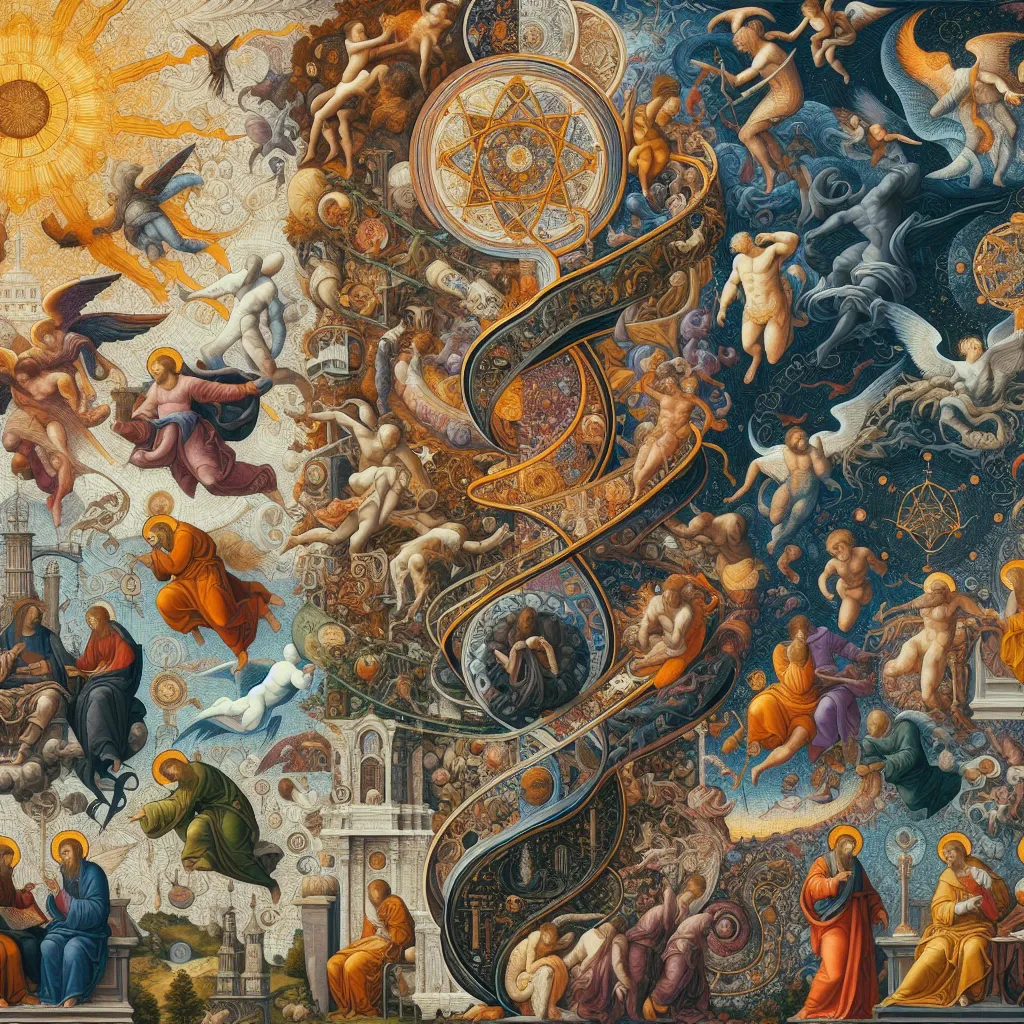
- Published on
- Authors

- Name
- You
Gnosticism and Comparative Religion: Mystical Threads Across Traditions
Introduction
Across the tapestry of human spirituality, certain themes and practices reveal themselves repeatedly, like celestial echoes resonating through time. Gnosticism, Hinduism, Buddhism, and Kabbalah may seem disparate at first glance, but a deeper dive uncovers common mystical threads that unite them. This exploration brings together ancient wisdom and advanced understanding, offering insights accessible to all.
The Mystical Core of Gnosticism
Gnosticism centers on esoteric knowledge (gnosis) and the transcendence of the material world. It emphasizes an inner revelation and a direct experience with the Divine, often contrasted with the physical and corruptible universe.
Key Gnostic Beliefs
| Belief | Description |
|---|---|
| Divine Spark | Every individual contains a fragment of the divine, which is trapped in the physical body. |
| Demiurge | The material world was created by a lesser deity, often seen as imperfect or malevolent. |
| Knowledge of the Self | True salvation comes through self-knowledge and realization of one's divine origin. |
Hinduism: The Eternal Quest for the Self
Hinduism, with its ancient roots, offers profound insights into the nature of the self and the universe. The concept of Atman (Self) and Brahman (Universal Soul) parallels the Gnostic idea of a divine spark within.
Shared Concepts
| Concept | Hinduism | Gnosticism |
|---|---|---|
| Divine Inner Self | Atman (soul) | Divine spark |
| Maya (Illusion) | Illusion creating physical reality | Material world created by the demiurge |
| Moksha (Liberation) | Liberation through self-realization | Salvation through gnosis |
Buddhism: Awakening to True Reality
Buddhism's focus on enlightenment and liberation from suffering closely aligns with the Gnostic pursuit of gnosis. Both traditions teach that ignorance (avidya in Buddhism) obscures true understanding.
Comparative Teachings
| Teaching | Buddhism | Gnosticism |
|---|---|---|
| Ignorance | Avidya - Root cause of suffering | Lack of gnosis - Root cause of entrapment |
| Liberation | Nirvana - Freedom from the cycle of rebirth | Emancipation through gnosis |
| Meditation & Mindfulness | Key practices for attaining enlightenment | Contemplation and inner revelation |
Kabbalah: The Jewish Mystical Tradition
Kabbalah, the mystical dimension of Judaism, bridges the spiritual and material worlds. The Sephirot (divine attributes) in the Tree of Life echoes the Gnostic emphasis on a structured metaphysical framework.
Connections Between Kabbalah and Gnosticism
| Aspect | Kabbalah | Gnosticism |
|---|---|---|
| Divine Attributes | Sephirot - ten emanations | Aeons - divine emanations |
| Creation | Complex process involving divine sparks | Creation by a demiurge |
| Inner Knowledge | Yesh Mekubal - received knowledge | Gnosis - hidden, spiritual knowledge |
Conclusion
Our journey through Gnosticism, Hinduism, Buddhism, and Kabbalah reveals a rich landscape interwoven with shared beliefs and mystical insights. While their exoteric (outer) forms differ, their esoteric (inner) wisdom converges on universal truths about the self, the divine, and the illusory nature of the material world.
By exploring these mystical threads, we not only gain a comprehensive understanding of various religious traditions but also touch upon the profound depths of human spirituality. Let this be an invitation to delve deeper into these paths, understanding that each step toward knowledge brings us closer to our inherent divine essence.
May the pursuit of gnosis, enlightenment, and self-realization light your path.
